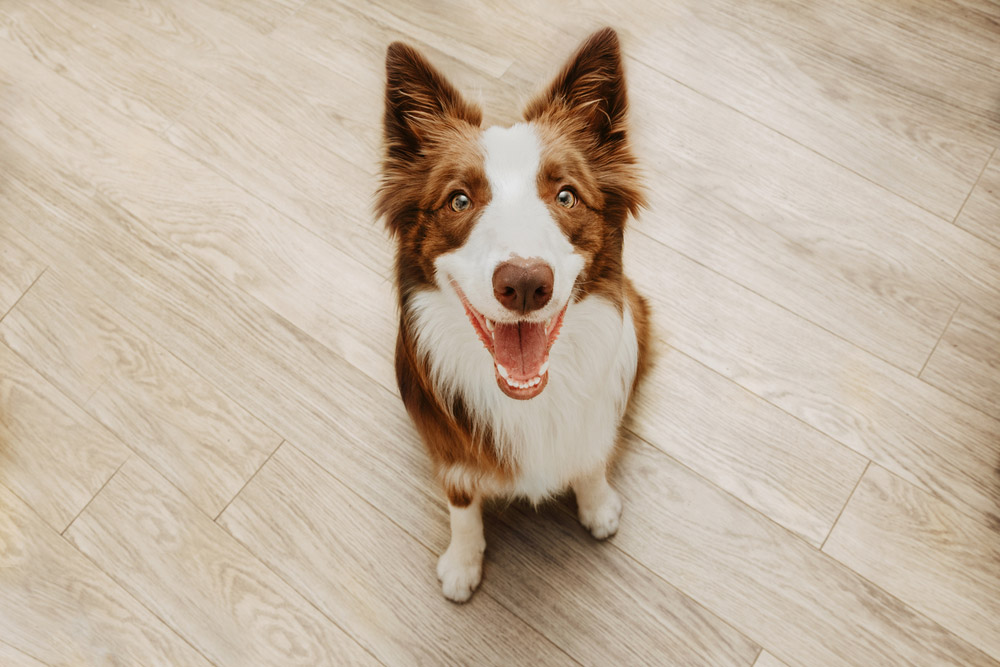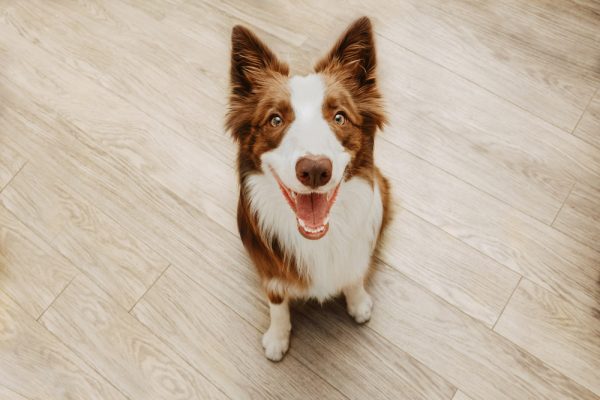Click to Skip Ahead
We need clean air to stay healthy, and our dogs are no different. Poor air quality can negatively impact humans, and if we’re not careful, can affect our beloved dogs in similar ways.
Whether the poor air quality stems from wildfires, smog, or something else entirely, they’re all dangerous for your dog.
Signs Air Quality Is Affecting Your Dog
Exposure to the fine particles in air pollution can cause irritation to your dog’s nose, throat and eyes causing them to become inflamed and red. Poor air quality also commonly leads to respiratory issues like coughing, fast breathing or difficulty breathing.
According to the American Veterinary Medical Association,1 signs of negative health consequences from wildfire smoke inhalation that warrant contacting your vet straight away include:
- Coughing or gagging
- Nasal discharge
- Difficulty breathing
- Eye irritation and excessive watering
- Throat or mouth inflammation
- Asthma-like reactions
- Increased breathing rate
- Disorientation or stumbling
- Reduced appetite or thirst
- Fatigue or weakness
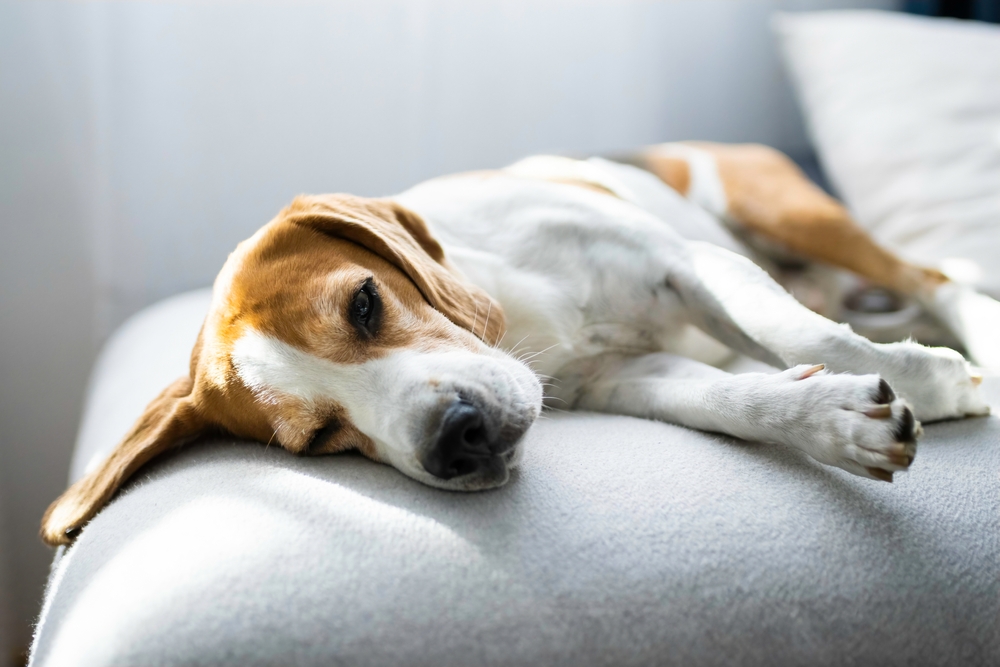
How Do You Check Current Air Quality?
Sometimes, it’s obvious that the air quality is poor, but it’s best to confirm it’s unsuitable before walking your dog. You also might think the air quality is poor even when there’s nothing wrong with it!
The good news is that you put all those questions to rest with the AirNow government website.2 You’ll enter your zip code, city, and state on the site, and it will display a map telling you the current air quality in your area.
The Air Quality Index (AQI) is the Environmental Protection Agency’s index for reporting air quality. It runs from 0 to 500 and the higher the AQI value, the greater the level of air pollution and the greater the health risks. An AQU of 101-150 is unhealthy for sensitive groups such as puppies, senior dogs, and dogs with breathing or heart issues. Once an AQI is above 151 it is considered unhealthy for everyone.
Of course, this won’t account for localized events (like your neighbor having a bonfire!), but it does a great job of showing the air quality in your town.
Dog Breeds More at Risk
Although poor air quality can affect any dog, certain groups are more sensitive to the adverse effects including puppies, senior dogs and dogs with respiratory or heart disease. Breeds with shorter muzzles are also more vulnerable to the negative effects of poor air quality. These breeds include Bulldogs, Boston Terriers, and Pugs, but any animal with a short muzzle is more susceptible, including brachycephalic felines, like Persians.
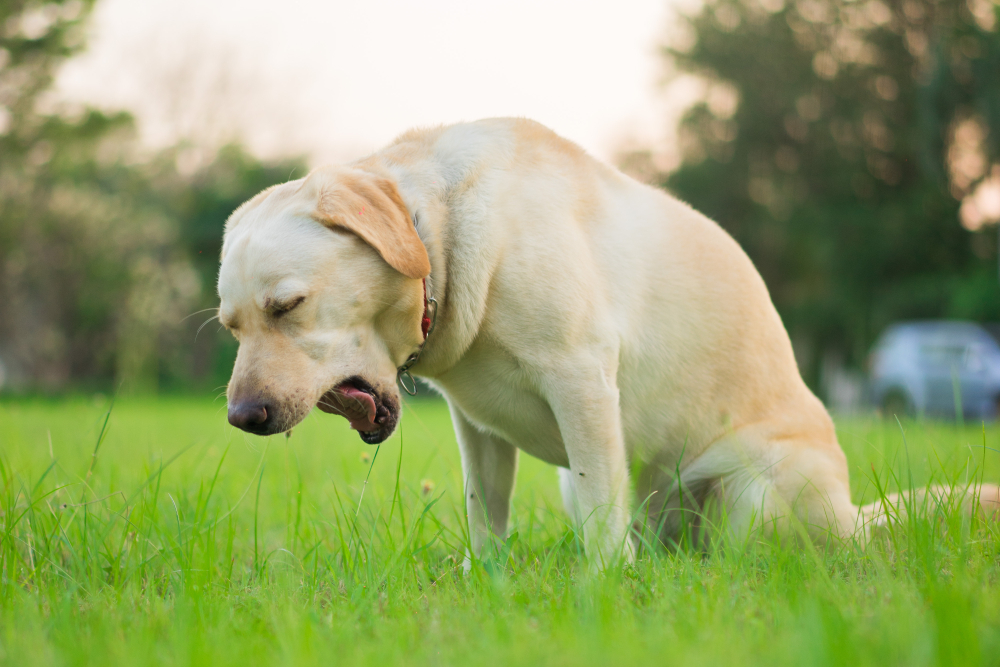
 The 5 Tips to Protect Your Dog
The 5 Tips to Protect Your Dog
If you’re experiencing poor air quality, there are a few things you can do to help your pup stay healthy. Most of our suggestions are simple, inexpensive, and only require a few adjustments.
1. Keep Them Indoors
You’ll still need to take your dog outside to go to the bathroom, but the less time you can spend outside, the better. A brief time outdoors is unlikely to harm your pup, but prolonged exposures are more likely to cause health problems.
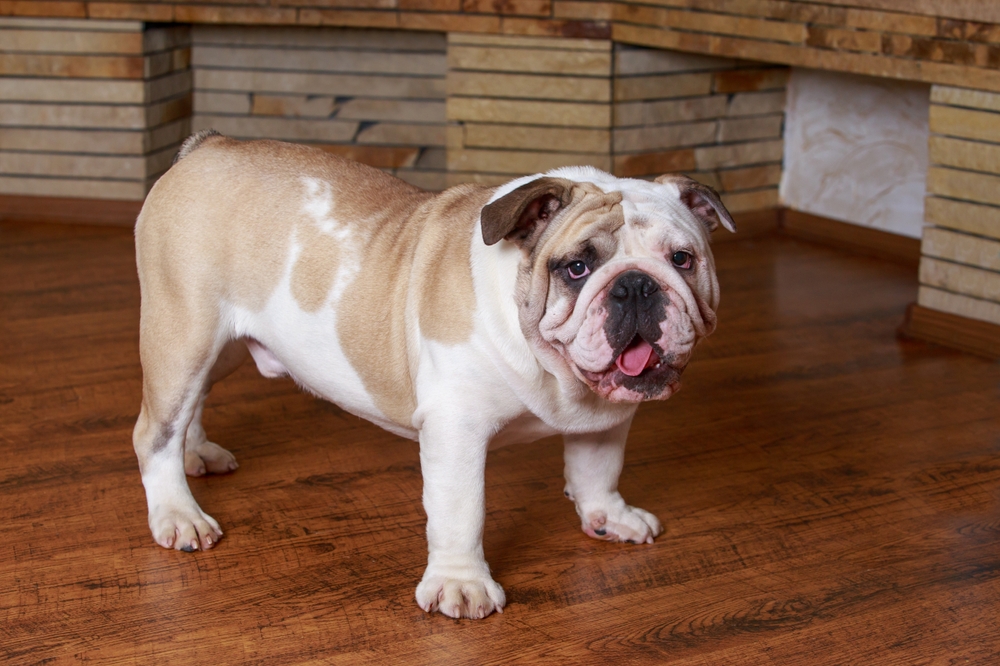
2. Avoid Outdoor Exercise
With poor air quality, the last thing you want is for your dog to experience an increased respiratory rate. That’s what outdoor exercise does, making it even more dangerous than just going outside.
If your pup likes to run around whenever you let them out, we recommend keeping them on a leash. That way, you can keep them under control and bring them right back in after they do their business.
3. Keep the Windows Shut
Open windows allow dangerous particulates to drift into your home, invalidating the entire purpose of staying inside! You can keep the windows closed and use an air purifier to improve the indoor air quality.
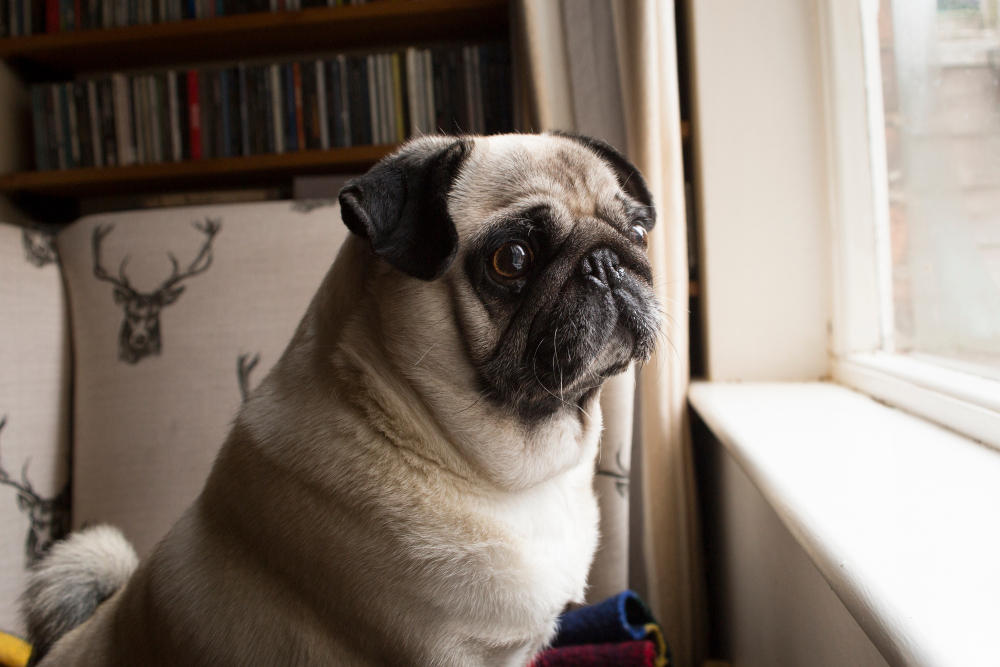
4. Use HEPA Filters
Although you can’t improve the air quality outdoors, you can minimize its effects by installing HEPA filters in your home. Ensure there are enough filters in your home, and prioritize areas where you and your pup spend most of your time. You can also purchase air purifiers with HEPA filers.
5. Prepare a Pet Evacuation Kit
Hopefully, this is something you never need, but it’s better to have emergency supplies for your dog in case you have to evacuate, for example due to wild fires spreading. The kit should include water, dry food, medication (if they need it), and a canine first aid kit. You should also have an emergency evacuation kit handy for you and your family.
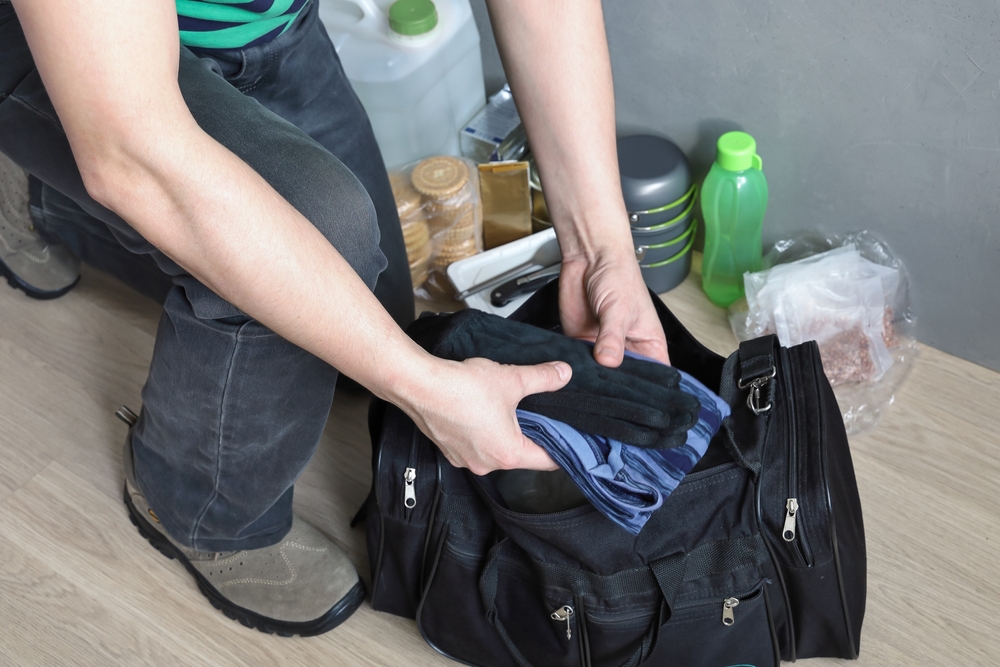
 Frequently Asked Questions (FAQ)
Frequently Asked Questions (FAQ)
You may have a few more questions about how air quality affects dogs, so we’ve answered some of the most common ones.
Should I Avoid Walking My Dog When the Air Quality Is Poor?
When you see an air quality warning, avoid or take shorter walks and entertain your dog indoors as much as possible. Dogs with flat faces, like French Bulldogs, are more vulnerable to respiratory problems, and they shouldn’t play outside when the air quality is poor. Other dogs considered more sensitive are puppies, elderly dogs and those with health conditions that affect the heart and lungs. Indoor enrichment like games, long lasting treats and food puzzles can help stop your dog getting bored when spending more time indoors.
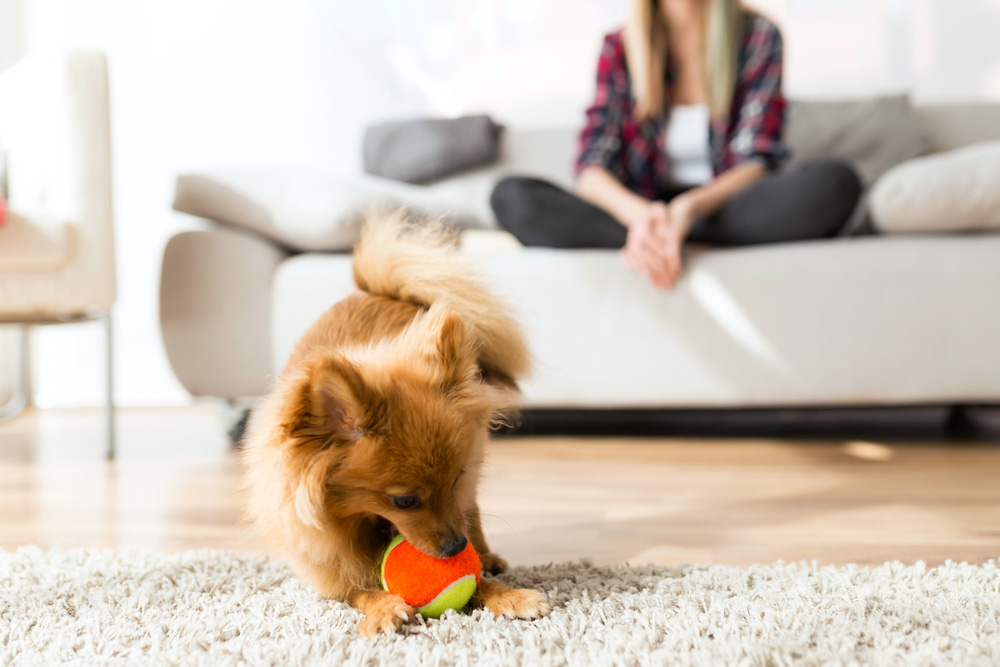
Can My Dog Wear a Mask?
Although masks protect humans from dangerous particulates, they’re not designed for canines. It’s better to keep your dog indoors if you’re worried about the air quality, and even if masks were safe for dogs to wear, it’s unlikely they would stay on. They would interfere with breathing and panting, and most dogs would not tolerate them.
 Final Thoughts
Final Thoughts
Nobody wants to deal with poor air quality, but millions of humans and animals must endure it every year. If you’re experiencing it right now, remember it’s temporary, and don’t forget about keeping your pup safe during these times. They rely on you, and with preparation, you can be proactive and keep them as safe as possible.
Featured Image Credit: smrm1977, Shutterstock

